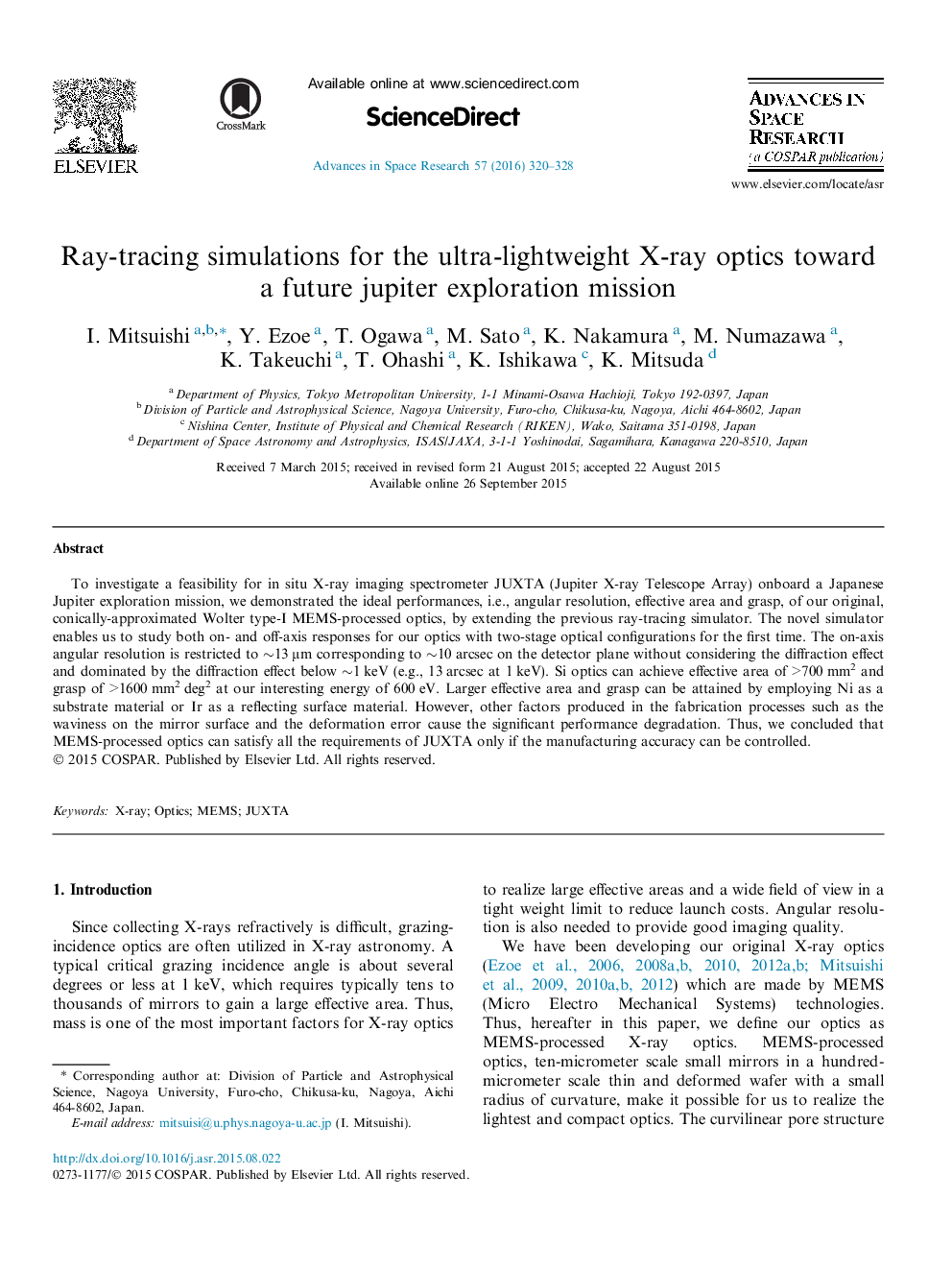| Article ID | Journal | Published Year | Pages | File Type |
|---|---|---|---|---|
| 1763957 | Advances in Space Research | 2016 | 9 Pages |
To investigate a feasibility for in situ X-ray imaging spectrometer JUXTA (Jupiter X-ray Telescope Array) onboard a Japanese Jupiter exploration mission, we demonstrated the ideal performances, i.e., angular resolution, effective area and grasp, of our original, conically-approximated Wolter type-I MEMS-processed optics, by extending the previous ray-tracing simulator. The novel simulator enables us to study both on- and off-axis responses for our optics with two-stage optical configurations for the first time. The on-axis angular resolution is restricted to ∼∼13 μm corresponding to ∼∼10 arcsec on the detector plane without considering the diffraction effect and dominated by the diffraction effect below ∼∼1 keV (e.g., 13 arcsec at 1 keV). Si optics can achieve effective area of >700 mm2 and grasp of >1600 mm2 deg2 at our interesting energy of 600 eV. Larger effective area and grasp can be attained by employing Ni as a substrate material or Ir as a reflecting surface material. However, other factors produced in the fabrication processes such as the waviness on the mirror surface and the deformation error cause the significant performance degradation. Thus, we concluded that MEMS-processed optics can satisfy all the requirements of JUXTA only if the manufacturing accuracy can be controlled.
